Guide des outils de l'écosystème BTC : suivez les mouvements de l'argent intelligent et récupérez la prochaine rune 100x
In the Bitcoin ecosystem, rune market tools have gradually become the secret weapon for some investors to achieve high returns.
For example, as of the time of writing, the BILLION鈥OLLAR鈥AT rune has achieved a hundredfold return from its initial price after it was minted to its highest point. As shown in the figure, the current price of this rune is 87.48 sats, while the market value is as high as $54.19 M, the 24-hour trading volume has reached $767.05 K, and the number of holders is 4,294. These data fully demonstrate the huge market potential and active trading of runes.
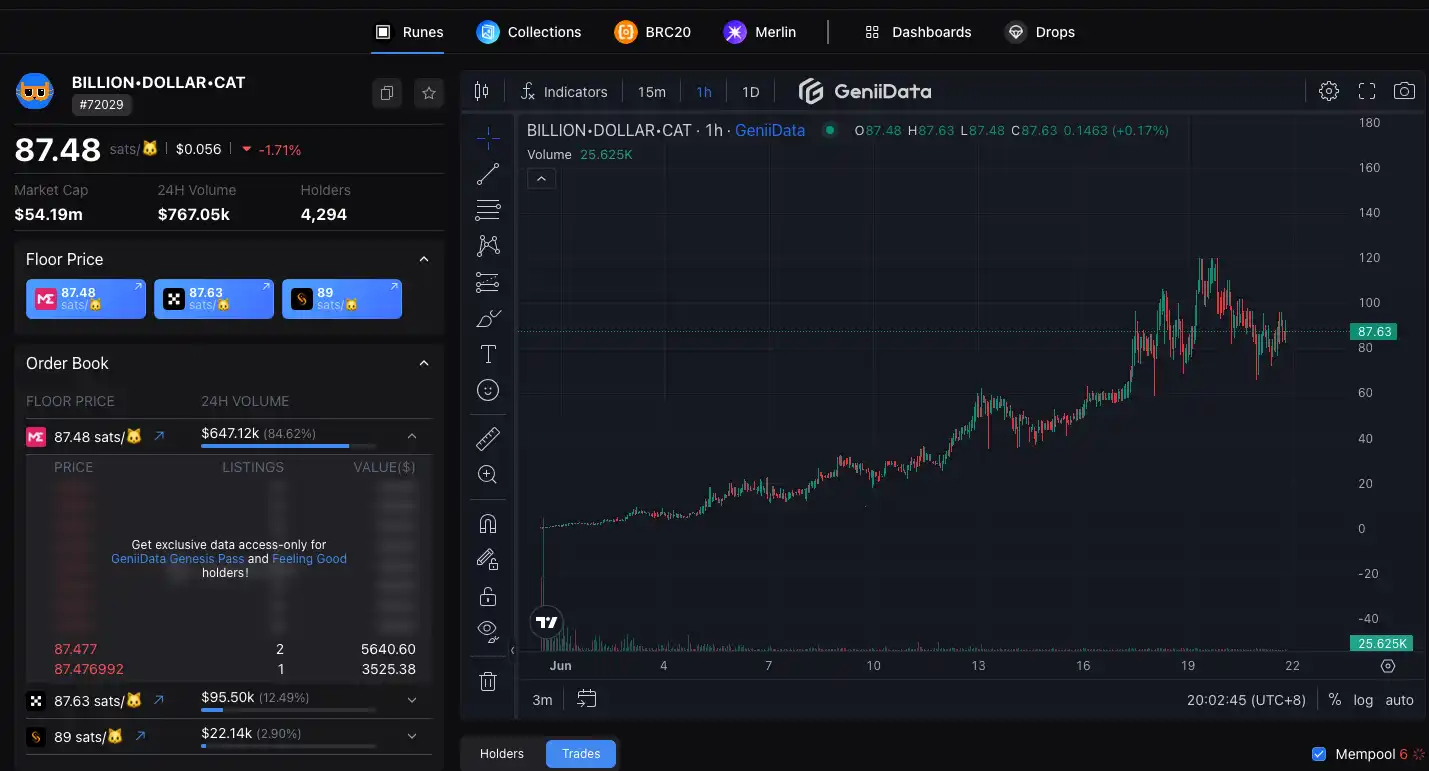
However, such high-yield opportunities are still a secret in a small circle, and many community friends who have not deeply cultivated the Bitcoin ecosystem may not be aware of the existence of these opportunities. Therefore, in this article, blockbeats will introduce some tools that Bitcoin ecosystem OGs and senior users are using to help everyone seize the next 100x rune and track the movement of smart money.
Casting tools
Ybot
Ybot.io is an efficient tool designed for Bitcoin rune trading, providing multiple functions such as rune casting, transaction acceleration, transaction management and wallet aggregation.
In the interface of Ybot.io, users can see three main sections: Rune Template List, Rune Details, and Task List.
The rune template list on the left displays the currently available rune templates and their related information, such as the rune name, holder, progress, and other concise data dashboards.
The rune details in the middle part can display the detailed information of the selected rune, including RuneID, progress bar, memory pool status, handling fee settings, etc.
The task list on the right shows the status of the current task. You can speed up the task and view unconfirmed transactions with one click.

The main function of Ybot.io is batch casting of runes. Ybot.io provides a convenient batch casting function for runes. Users can cast multiple runes at the same time and set different miner fees for each transaction. This is very helpful for users who need to cast runes frequently.
Select the rune you want to cast in the rune template list. Set options such as Current Rate, Rare and Slow, Custom, etc. Enter the batch casting quantity and address. Click Start Casting and the tool will automatically process the casting task.
In addition, in terms of task management, users can monitor and manage all ongoing transaction tasks in real time. Users can check the progress of tasks and accelerate unconfirmed transactions with one click to ensure that all transactions are passed as soon as possible.
Check the current task status in the task list. Select the task that needs to be accelerated and click One-click Acceleration. Check and manage unconfirmed transactions through Unconfirmed Transactions.
GeniiData
Compared to ybot, GeniiData is more suitable for advanced users. In addition to basic casting functions, it also provides some data dashboard functions, allowing users to better manage and track their rune transactions.
GeniiDatas data dashboard function enables users to view casting progress and relevant information about the rune market in real time. This data helps users make better decisions and manage their rune assets. Including real-time casting progress: after entering the rune name, you can view the casting progress in real time; market data: provides information such as the current rune markets trading volume, price trends, etc.; jump function: by clicking on the relevant link, you can quickly jump to the trading market or view detailed rune information.
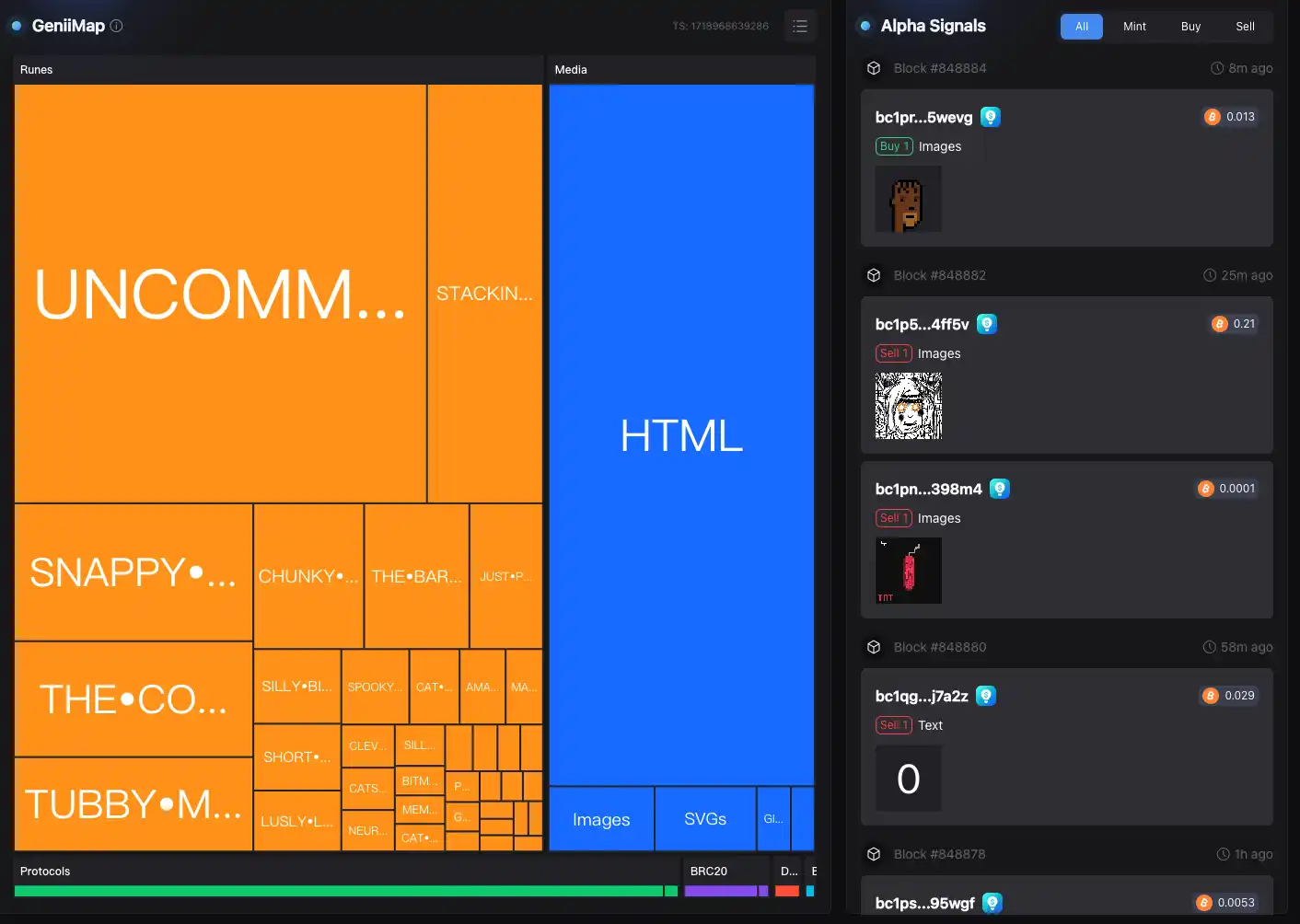
As you can see on the left, GeniiData provides a visualization interface to show the distribution of different types of runes. Blocks of different colors and sizes represent the relative number and importance of different runes, and you can see at a glance which runes are being cast in the hottest casting.
In the Alpha Signals panel on the right, users can view the latest trading signals in real time. These signals include: Buy and Sell Signals: Displays the latest buy and sell transactions to help users make trading decisions quickly; Block Information: Provides block number and time information to facilitate users to track the confirmation status of transactions.
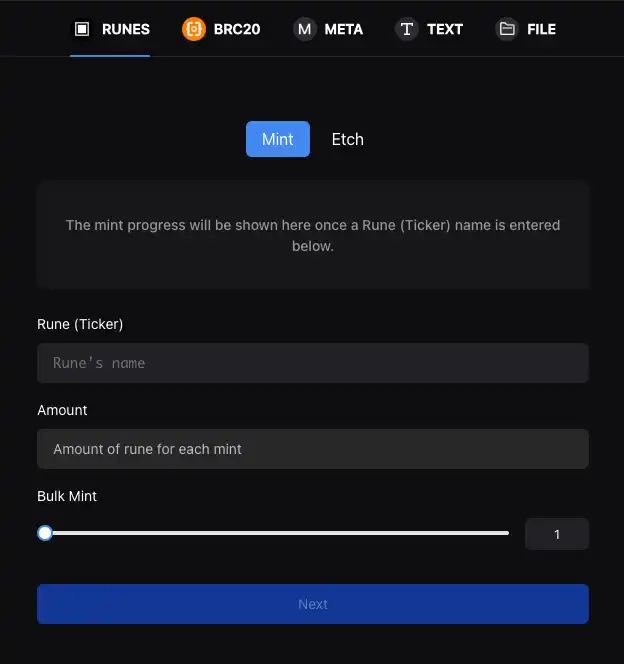
With the guidance of these data, users can more accurately determine which runes they want to cast. Compared with the data function, GeniiData provides a simple and intuitive casting setting interface for casting, allowing users to quickly configure and start casting runes.
Enter the name of the rune (Ticker) in Rune (Ticker), set the number of runes to be cast each time in Amount, set the number of batch castings using the slider in Bulk Mint, and click Next to proceed to the next step of wallet confirmation.
Data analysis tools
GeniiData
In addition to minting, this platform brings together various data analysis dashboards created by community members, and users can find and use these dashboards according to their needs to obtain comprehensive market information and transaction data.

GeniiDatas data analysis platform interface is clear and intuitive, and mainly includes the following parts:
Dashboard List: Displays various data analysis dashboards created by community members, categorized by trends, new releases, and time periods (such as the last 7 days, 30 days).
Search function: Users can quickly find the data analysis content they need by searching for specific dashboards or authors.
Collection function: Users can collect their favorite dashboards for easy reference in the future.
Users can find the specific data they want on it, which is very comprehensive. For example, the market overview provides an analytical dashboard of the overall market situation, including trading volume, price trends, market share and other information, such as the overall trading situation and trends of the rune market.

Another example is specific project analysis, a dashboard that provides in-depth analysis of a specific project, such as BRC20 $PIZZA Analytics, which displays detailed transaction data and market dynamics of the $PIZZA project.
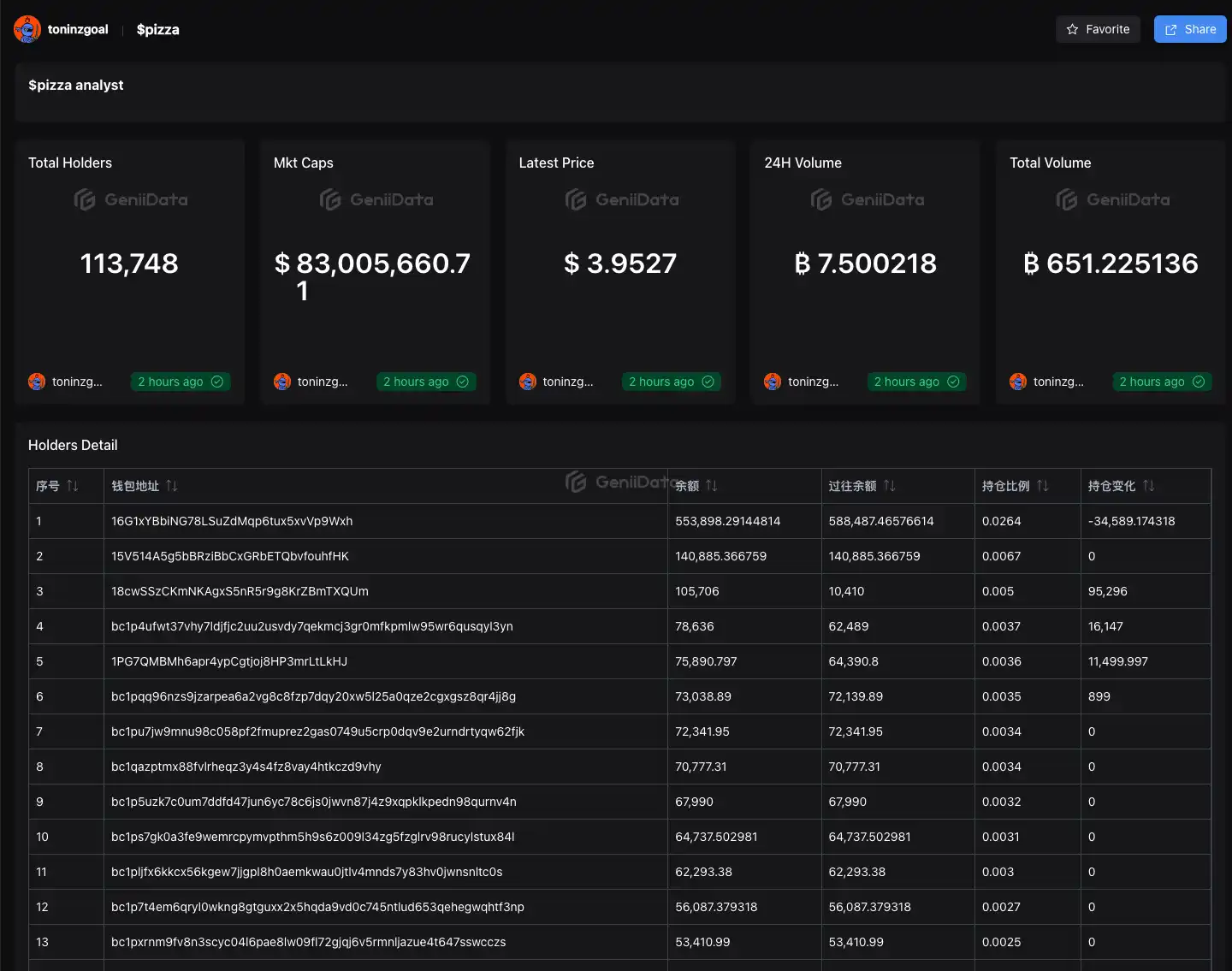
There is also real-time data monitoring: Some dashboards provide real-time data monitoring functions to help users grasp market dynamics instantly. For example, the Liquidium dashboard displays real-time market liquidity data. Historical data review: By reviewing historical data, users can understand the development trends and changes of the market. For example, the Ordinals BITMAP Index dashboard displays Ordinals historical trading data and trend analysis.
In addition to using the search bar to enter keywords or author names to quickly find relevant dashboards, you can also filter results by trends, new releases, and time periods to find the latest and most relevant analytical data, and add dashboards to your favorites list. Through these analytical market overviews and specific project data on GeniiData, users can make more informed investment decisions.
satosea.xyz
For real-time tracking and push notifications of new rune releases, the Discord robot of satosea.xyz does a pretty good job. I will turn on the Discord push notification on my phone and use it together. They push notifications for free on the official Discord.
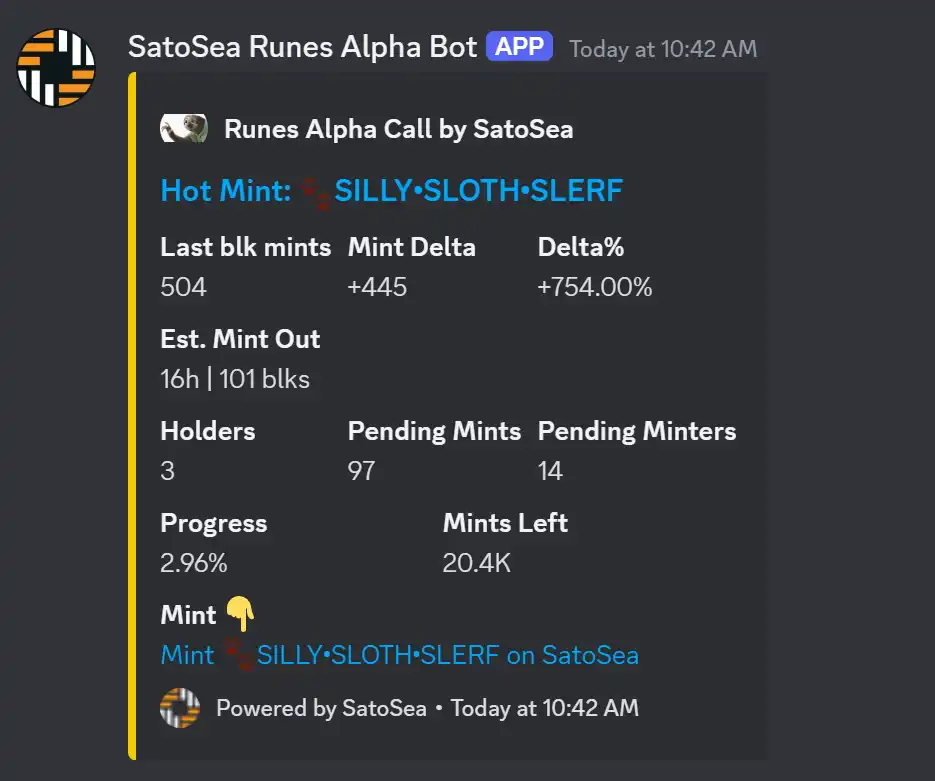
The pushed data dimensions are quite comprehensive, including the number of confirmed castings in the previous block of the hot rune, the number of newly added castings compared to the previous block, the number of castings waiting for confirmation in the current memory pool and the number of casters, the current progress and the remaining number of castings.
Mempool Snipe Tool
Mempool Snipe is often used to replace purchase transactions that are already in the memory pool with higher miner fees in the secondary market. When a rune/NFT project has a large number of transactions in a short period of time, you may need to use this type of tool to grab orders at the floor price, or to ensure that your purchase transactions are not replaced (anti-sniping).
The usage patterns of these tools are basically the same. Take the Runestone in the picture below as an example. We can see that it has circled on Magic Eden, that is, someone has submitted a purchase transaction. But before the block is confirmed, the final ownership of this rune is still to be confirmed. Since the average block time of Bitcoin may be as high as 15-20 minutes, the purchase on Bitcoin is more like a bidding within the random block confirmation time, and the bidding method is memory pool sniping.

In the above picture, we can see that there is a pink string behind Check the transaction here. Click it to jump to the tx details page on mempool.space. Click the button surrounded by a red frame in the picture below to copy the tx id.

Next, there are several tools for us to choose from:
Rune Blaster
This is a tool developed by @lifofifo , the 16th-ranked contributor to the Ordinals protocol. It has everything you need. In addition to the rune casting tool that is completely non-custodial and can be accelerated by CPFP for 24 or less transactions per block, there is also MagicPool, which specifically checks the rune transaction status (how many transactions are currently in the memory pool), the RBF tool that accelerates rune casting, and transaction sniping and cancellation functions.
These features are currently open for use. ( Portal )
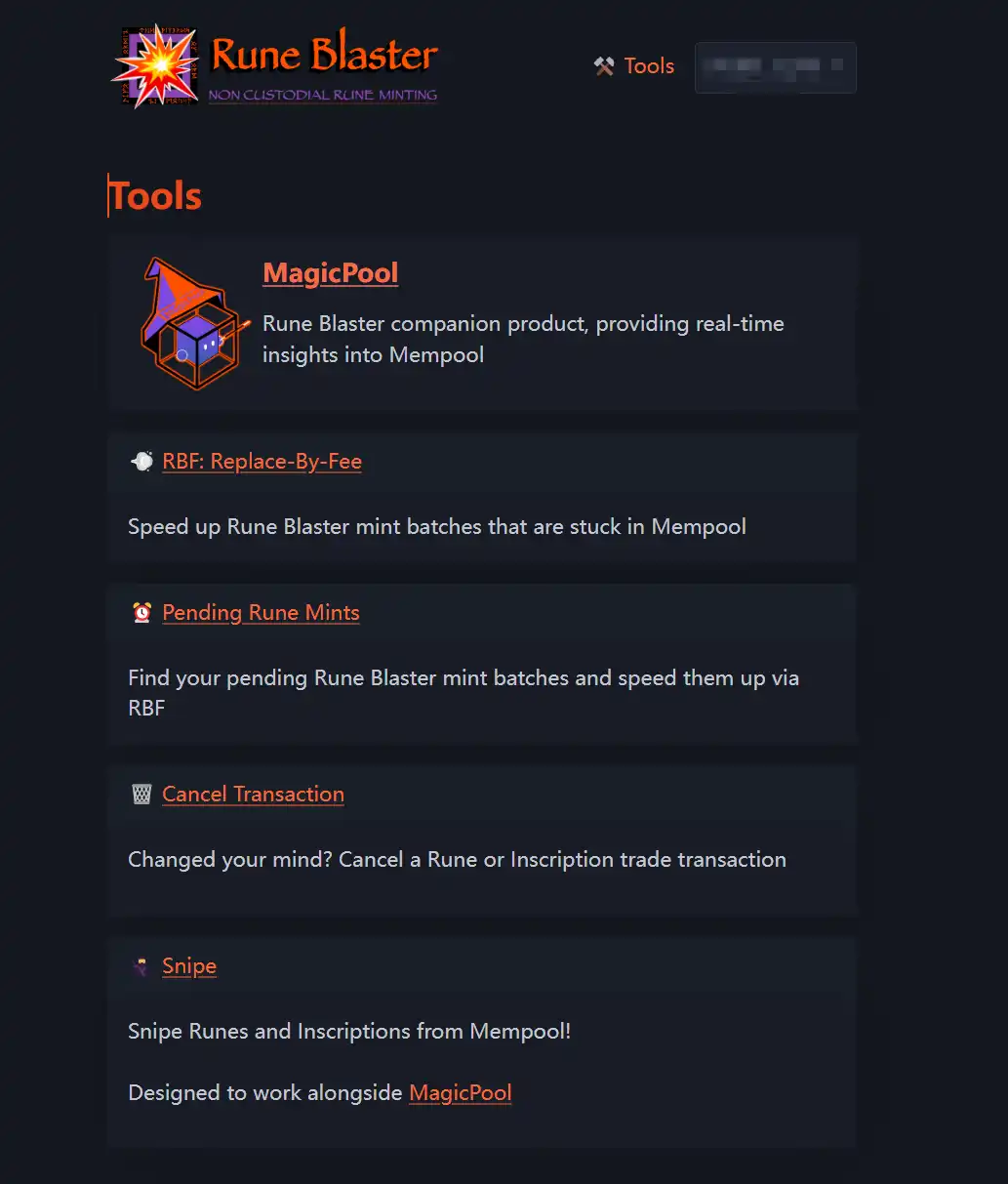
We will mainly introduce sniping. Click Snipe in the picture above to jump to the following page.
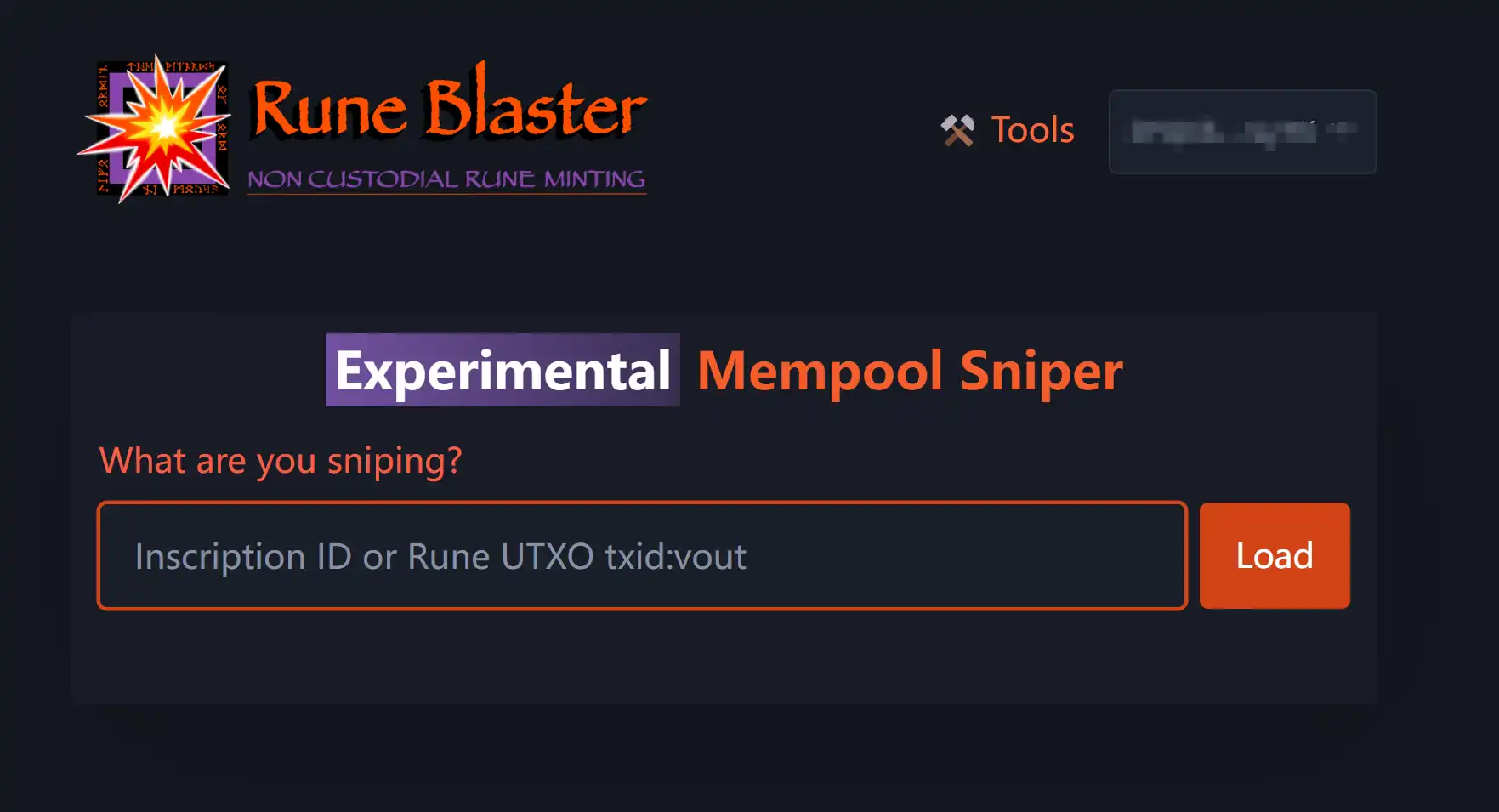
What we need to enter here is the inscription ID, which can be found and copied in the NFT details page of Magic Eden. We randomly found an NFT that has submitted a purchase transaction but has not yet been confirmed by the block:
Copy it and click Load to display the details, then fill in the miner fee rate you want in the box under Desired Fee Rate.

What鈥檚 more interesting is that the Rune Blaster sniper tool can mint up to 24 runes 0 while sniping. This option is optional, and the miner鈥檚 fee given for minting runes does not affect the miner鈥檚 fee for sniping transactions (that is, you can increase the fee for sniping transactions but the fee for minting transactions can be given normally).
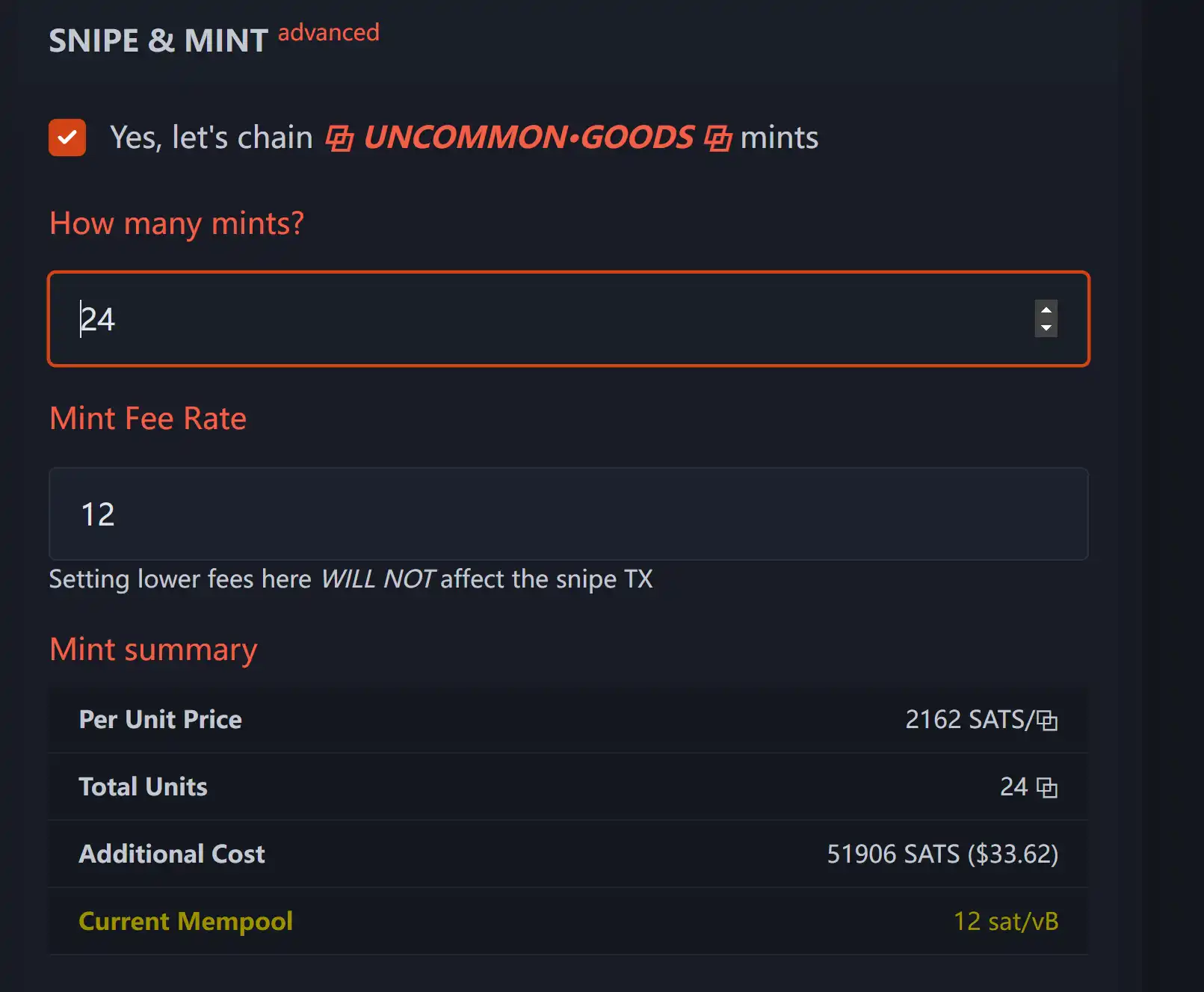
Rune sniping requires inputting tx id + vout (here is the explanation of vout, that is, there may be multiple outputs in a transaction. If we want to use Rune Blaster alone to perform rune sniping, we need to know the rank of the transaction output containing the rune). Therefore, it is much more convenient to use MagicPool. Just select the rune you want to snipe on MagicPool and click it, and all the current rune transactions available for sniping will be displayed.

Then click Snipe, and the rest of the operations are the same as the sniping picture above.
Goldmine
This tool is currently only open to its NFT holders and is one of the earliest memory pool sniping tools on the market. It has Bitcoin NFT sniping/rune sniping/transaction cancellation and batch transfer functions.
For the sniping function, just copy the tx id into the box and click Go.

Then you will be redirected to the sniping page. You just need to select Miner fee to increase the amount compared to the existing purchase transaction, for example, 1.1 times.

Finally, click Snipe and confirm the transaction to complete the sniping.
Magicsat.io
This is a rare Satoshi trading market, but the sniping function is also quite useful. After connecting the wallet, the pop-up menu appears in the upper right corner where the address is displayed, and find Instant Snipe in Tools.
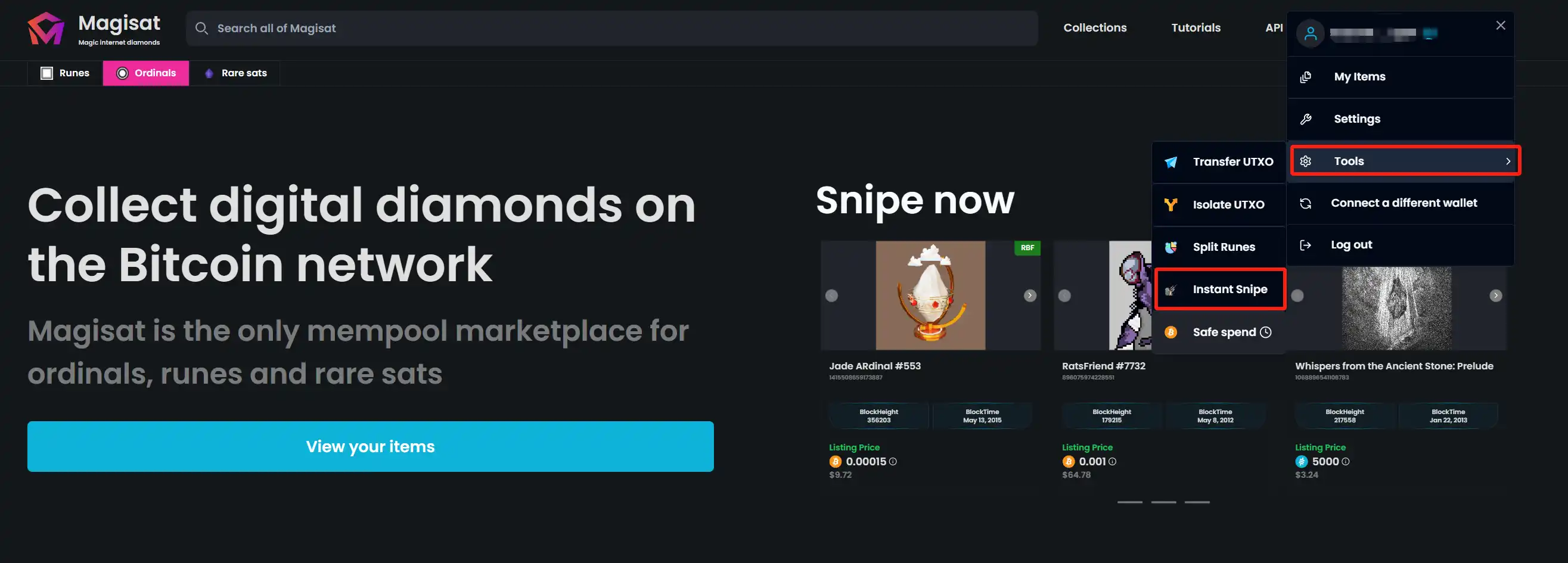
Then you will be asked to submit the tx id directly. Both runes and small pictures can be sniped. After submitting, click Buy floor to conduct the transaction.

This article is sourced from the internet: BTC Ecosystem Tool Guide: Track Smart Money Movements and Grab the Next 100x Rune
According to incomplete statistics from Odaily Planet Daily, there were 30 blockchain financing events at home and abroad announced from June 10 to June 16, which was a decrease from last weeks data (23). The total amount of financing disclosed was approximately US$125 million, which was an increase from last weeks data (US$234 million). Last week, the project that received the most investment was the modular zkVM project Nexus ($25 million); followed closely by the token distribution protocol Layer 3 ($15 million). The following are specific financing events (Note: 1. Sort by the amount of money announced; 2. Excludes fund raising and MA events; 3. * indicates a traditional company whose business involves blockchain): Nexus announces $25 million Series A funding round led by Lightspeed and Pantera On June 11,…







